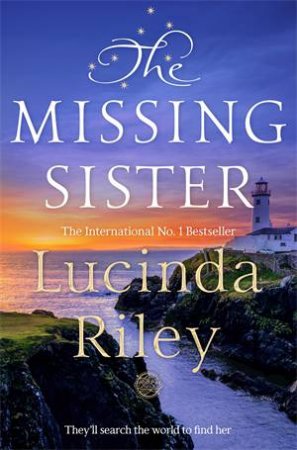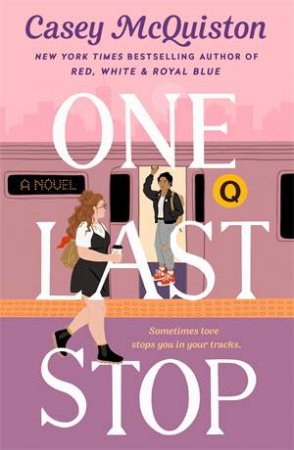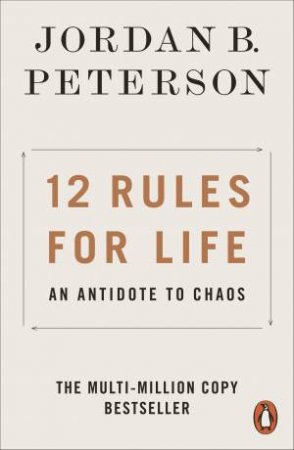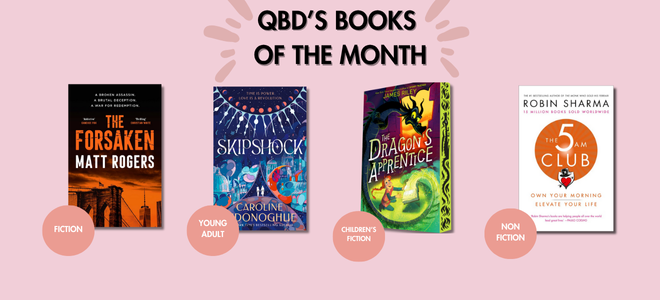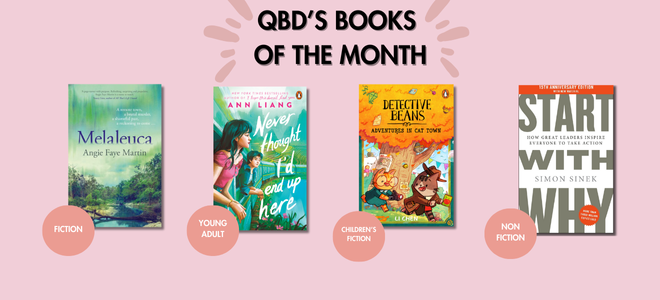We are super excited to get our hands on an interview with the author of our Book of the Month, Sally Hepworth!
A tale about motherhood and family, the story follows three generations of midwives. If you have not picked up a copy yet, you can do so online here , or at your local QBD.
Q1. How did you come to write the book?
 A. There is a saying among writers “Write the book you want to read.” That’s what I did. Being the mother of young children (and pregnant while I wrote book), I was finding myself drawn to novels such as The Birth House by Ami McKay and Midwives by Chris Bohjalian. I have always thought there was a certain magic to midwifery—for a while, after I left high school, I even considered becoming a midwife. So, when it came time to start a novel, there was no choice to make.
A. There is a saying among writers “Write the book you want to read.” That’s what I did. Being the mother of young children (and pregnant while I wrote book), I was finding myself drawn to novels such as The Birth House by Ami McKay and Midwives by Chris Bohjalian. I have always thought there was a certain magic to midwifery—for a while, after I left high school, I even considered becoming a midwife. So, when it came time to start a novel, there was no choice to make.
I researched for months before I wrote a word. While I knew I was going to write about midwives, I had no idea what the actual story would be. I had a suspicion it would involve a mother and a daughter—particularly when I found out I was carrying a daughter—but it wasn’t until I read some fascinating stories about midwifery in the 1940s and 50s that Floss’s character (a grandmother) was born.
For me, the best plots start with a question, and the question I landed on for this book was: “Why would a woman hide the identity of her baby’s father?” I like books that have a big upheaval really early on—a ‘call to action’ for the readers—so I knew that by the end of the first chapter, the reader would find out that Neva was pregnant, and that she wouldn’t reveal the identity of the father. At first, I didn’t know why she was hiding it, and I didn’t know who the father was, but as I wrote, I started to figure it out.
But when all is said and done, THE SECRETS OF MIDWIVES is a book about family. What makes a mother, what binds family together, and the role of biology. In writing this book, I found answers to a whole lot of questions I never knew I had. And I suspect it is no coincidence that this book took me nine months to write. In effect, in 2012, I gave birth to two babies.
Q2. In the novel there are many differing opinions about the “right” way to give birth, even among midwives. Why did you choose to include this in the book?
A. In my experience, there still exists a lot of debate over the “right” way to give birth so I thought it was important for authenticity to include this in the book. Also, the idea of “right” and “wrong” tied in with the novel’s theme: family. Unfortunately, there is still a commonly held belief that there is a ‘right’ and ‘wrong’ kind of family. Or at least a “good” and a “better” type. But these days, there are so many different kinds of families—blended, adoptive, single-parent, same-sex parents, communities of singles. Of course, there are a lot of (strong) opinions on this too! To me, this was all rich fodder for a novel.
As I started researching for this book, I read a lovely line in a book that said childbirth was a woman’s first battle as a mother, and it was this battle that made her a warrior, capable of protecting her child. I found this fascinating, but also troubling. If birth makes a mother a warrior, where did it leave adoptive parents? Step parents? Fathers?
It was also troubling on a personal level. My son had been born naturally and my daughter was due to be born by scheduled C-section. I had a sense that it didn’t matter how the baby was born, that the birth had no continued bearing on the relationship between mother and child, but the more I read about the transformative quality of natural birth, the more I wondered.
In writing this book, and in giving birth to my daughter by C-section, I was able to find answers to my questions. I have more respect for natural birth and midwifery now than I ever did, and I think a woman’s ability to provide everything her child needs through pregnancy and birth (and beyond!) is astonishing—even magical. And the idea of a home birth, I’ll admit, holds a certain appeal for me now that it hadn’t before. But I finally determined that there is no “right” way to give birth, because there is no “wrong” way. You don’t become a warrior because of the way you give birth. You become a warrior because of the depth of the love you feel for your child.
And while labor may be the first battle you’ll fight for your child, compared to the battles that still lie ahead? Even the most arduous birth is a walk in the park.
Q3. What research did you do?
 A. As I prepared to write this novel, I read everything I could get my hands on about midwifery—novels, memoirs, non-fiction books—and I watched every piece of footage that showed high-risk deliveries that Youtube had available. I subscribed to online communities and forums where I was able to ask questions about midwifery and birth and I touched base with several home-birth midwives and midwives alliance groups. I also have an aunt who is a midwife who was able to make suggestions and verify things for me.
A. As I prepared to write this novel, I read everything I could get my hands on about midwifery—novels, memoirs, non-fiction books—and I watched every piece of footage that showed high-risk deliveries that Youtube had available. I subscribed to online communities and forums where I was able to ask questions about midwifery and birth and I touched base with several home-birth midwives and midwives alliance groups. I also have an aunt who is a midwife who was able to make suggestions and verify things for me.
Being pregnant, I also had easy access to my obstetrician for questions. It became common for my prenatal check-ups to consist of a quick blood pressure check, followed by twenty minutes of question time about my novel. In the hospital after having my daughter, I had a fantastic midwife who shared many stories with me about unusual or memorable births. I was stunned by the level of skill and expertise that was required, and the host of things to be prepared for during labor. But what I remember most about our conversations is her awe and respect for mothers in labor, and I attempted to weave this awe into all three of my POV characters, particularly Neva.
Q4. What are some of the weird and wonderful facts you’ve learned about midwifery and birth during your research?
A.
- In the past, midwives were known to secretly harbor unwed mothers, perform abortions, baptize babies, and serve as pediatricians for the first year of the baby’s birth.
-
May Babies Are The Heaviest : Babies born in May are, on average, 200 grams heavier than any other month.
- Centuries ago the midwife would catch the baby in her apron!
-
In the US, midwifery is only Licensed or regulated in 21 states. In most states licensed midwives are not required to have any practice agreement with a doctor.
Q5. One of your protagonists has issues with her mother. Did you draw on personal experience for this?
A. Actually, my mother and I have a very close—verging on boring—relationship. Though we are quite different (she is private and conservative like Neva, and I am like Grace—pushy and talkative and loud) conflict between us is rare. So I wasn’t able to draw on that relationship from a dysfunctional perspective. That said, I was able to identify with loving someone who is very different (not just my mother, but also my husband and my son), and learning how to love them the way they need you to. Above all, the key is respecting the person for who they are, and always looking for the good they can offer.
Q6. How can readers get in touch with you and support your work?
A. I am very active on Facebook, Instagram and Twitter. I have also started spending more time on Goodreads. My website www.sallyhepworthauthor.com is the place to go for book information, upcoming events and my bio.
Thanks for listening (reading)!















